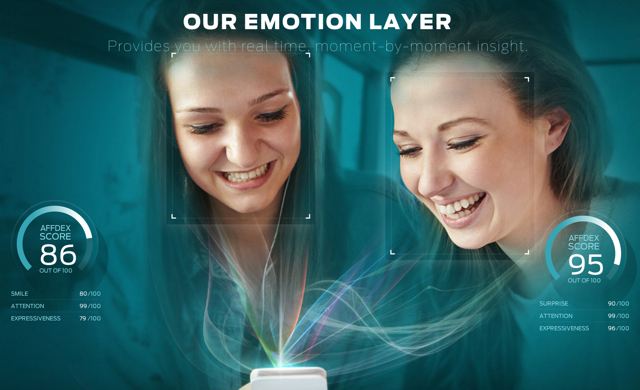Facial Monitoring Software Could Impact Your TV Experience
September 21, 2015
TV technology is getting closer to monitoring and analyzing our facial expressions in order to distinguish between boredom and enthusiasm to better understand our viewing tastes. Software from media startup Affectiva could usher in a new frontier in television viewing, one in which our devices watch our reactions and offer content suggestions or enable brands to provide more targeted ads. If consumers are willing to allow their emotional data to be gathered, movie and TV show recommendations from Netflix, for example, could become more relevant.
According to New Scientist, “Affectiva’s software first pinpoints important facial markers, such as the mouth, eyebrows and the tip of the nose. Then, machine-learning algorithms watch how those regions move or how the skin texture and color changes over the course of the video. These changes are broken down into discrete expressions indicating shifting emotions.”
“It provides a way of getting at those more genuine, spontaneous interactions,” suggests Daniel McDuff, Affectiva’s principal scientist. “This is their visceral response. It’s not sent through a cognitive filter where they have to evaluate how they feel.”
The Affectiva team has so far collected over three million videos of people for its database. The individuals represent different ages, genders and ethnicities.
“Researchers used viewers’ home webcams to monitor the facial movements of more than 1,200 people as they watched advertisements for sweets, pet supplies and groceries,” explains Quartz. “The model accurately determined whether they enjoyed the video, according to the study published in the peer-reviewed IEEE Transactions on Affective Computing this month.”
While many consumers are already comfortable sharing personal data with companies, the facial expression technology could simply provide another data point, although privacy issues would likely be raised.
It is worth noting that since facial expressions vary across different personalities, and can be impacted by context such as a particularly challenging day, the technology is not foolproof.
However, the concept should still prove intriguing to advertisers, streaming services, television networks and electronics manufacturers.


No Comments Yet
You can be the first to comment!
Sorry, comments for this entry are closed at this time.